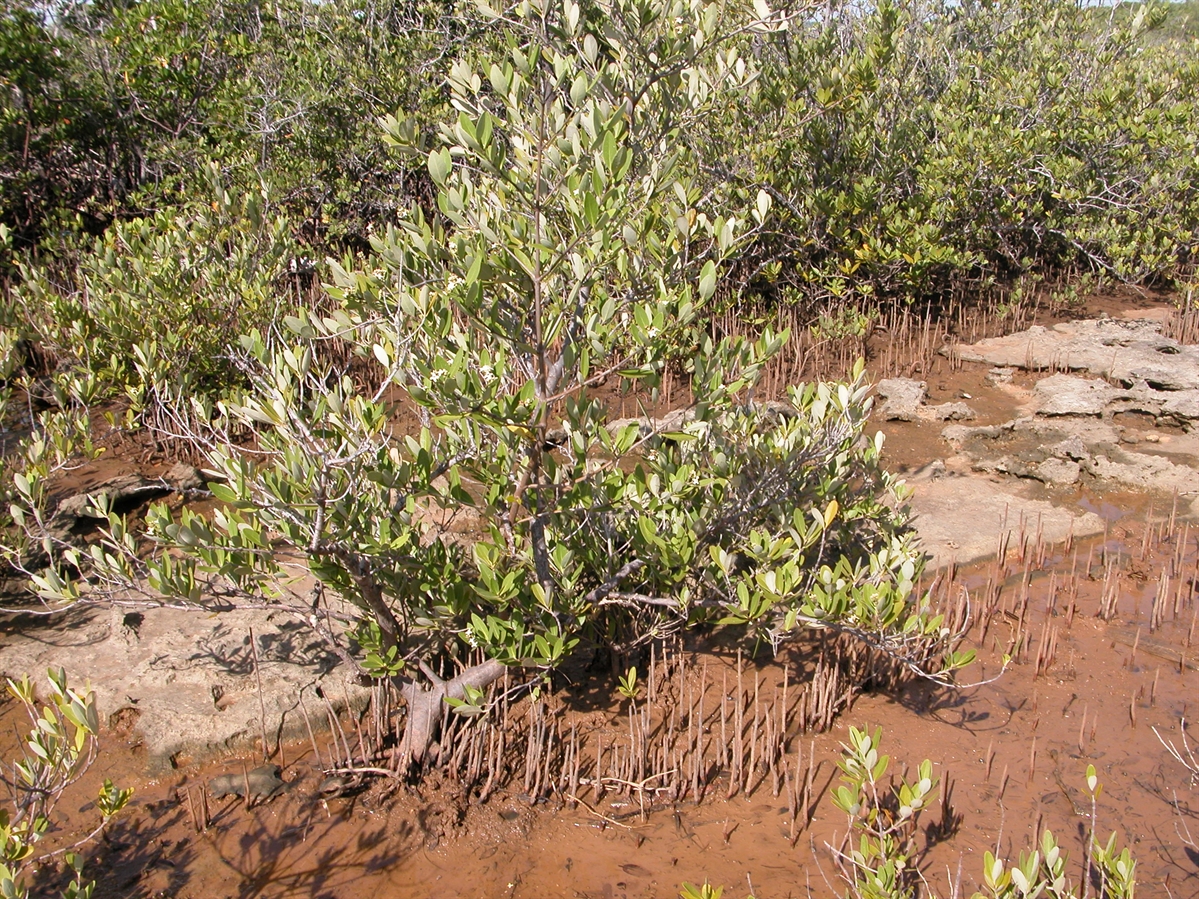Habit: Avicennia germinans grows as a low shrub to tall tree (up to ten meters) with trunks up to 75 cm wide. The leaves are arranged oppositely, lanceolate in shape and will exude salt crystals over their lower surface. The leaf color is a dull grayish yellow-green. The roots produce pneumatophores rising up to 20 centimeters above ground to allow oxygen to get to the roots during periods of flooding.
The complete, perfect, zygomorphic flowers are arranged in terminal and axillary spikes up to 7.5 cm long and are zygomorphic. The calyx has 5 unfused sepals that are pubescent on the outside. The corolla has 4 partially fused petals that are yellowish white and pubescent. The fruit is a capsule and will be over two cm at maturity. The seeds germinate while still attached to the parent plant.
Habitat: Avicennia germinans grows in both saline and brackish environments in coastal and inland aquatic systems. Occurring intermixed with Rhizophora mangle as shrubs or often as tall trees in areas of deeper water.
Distribution: Avicennia germinans grows on all island groupings in the Lucayan Archipelago as well as the Caribbean region and Bermuda, the southern United States and Mexico along the gulf coast. They also occur in Central America, parts of South America and West Africa.
Cultural usage/Economic value: Avicennia germinans as with all mangrove species are builders of land, trapping organic debris before it enters aquatic systems and building up humus. Additionally they protect shorelines during hurricanes. They have been used as a source for honey production. The wood is purple in color and has been used for woodcarvings.
Avicennia germinans has a long history of medicinal usage. Teas are used to treat gastrointestinal and dermatological problems as well as hemorrhoids.




